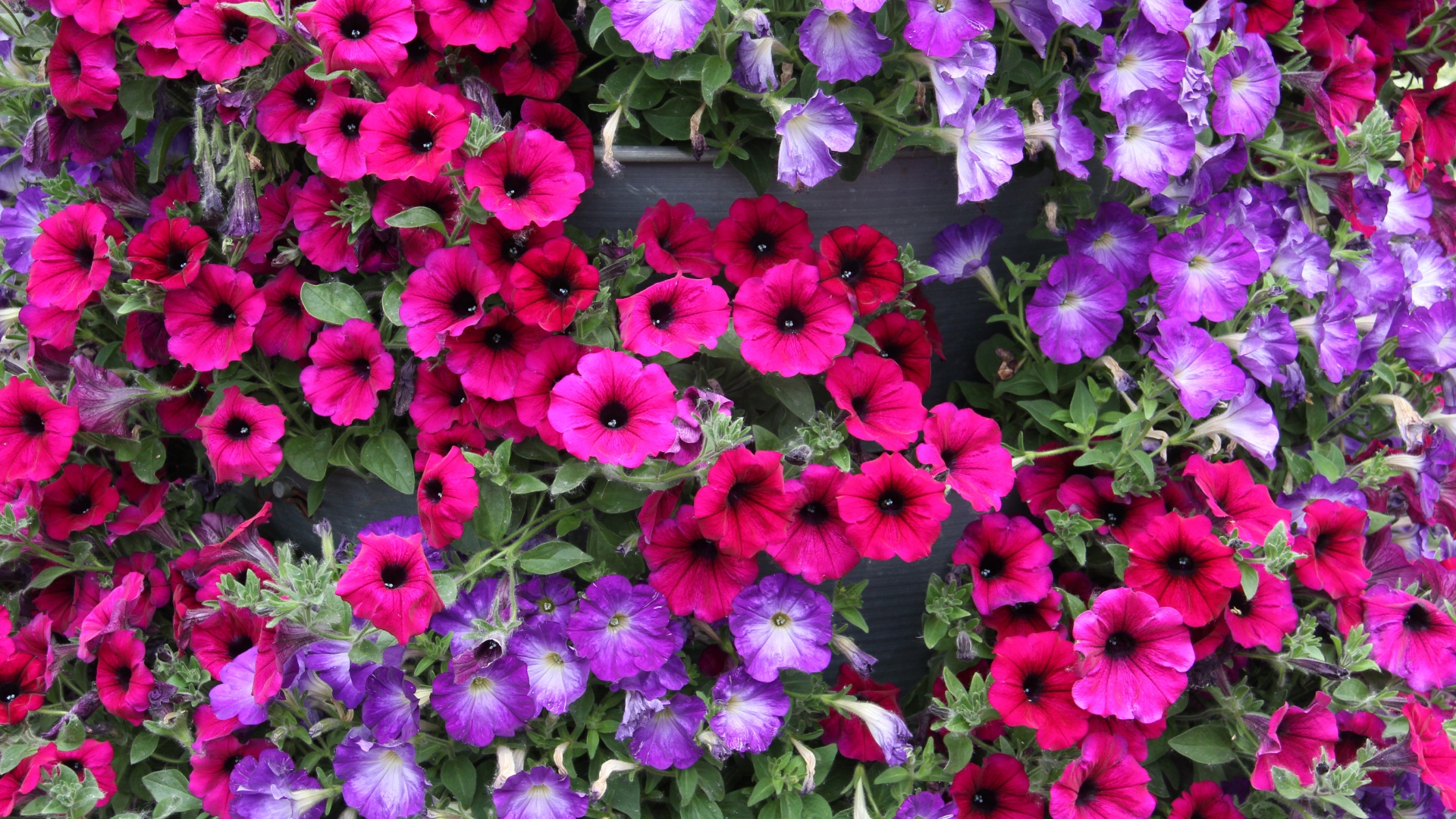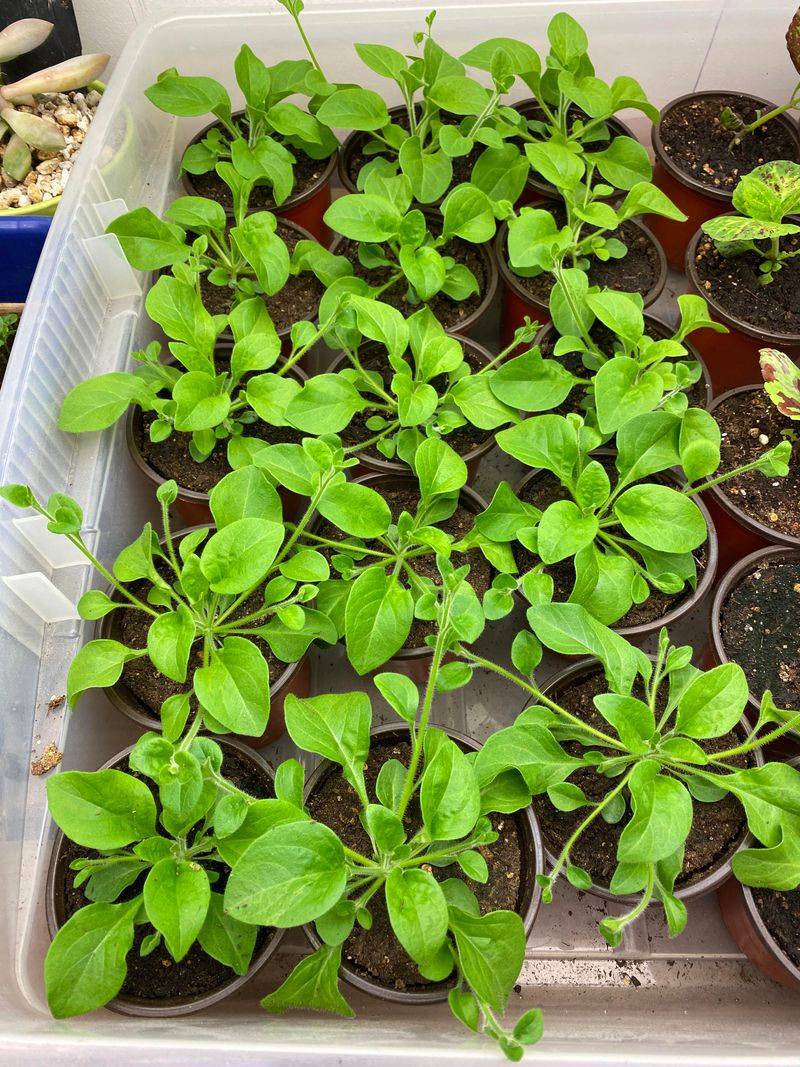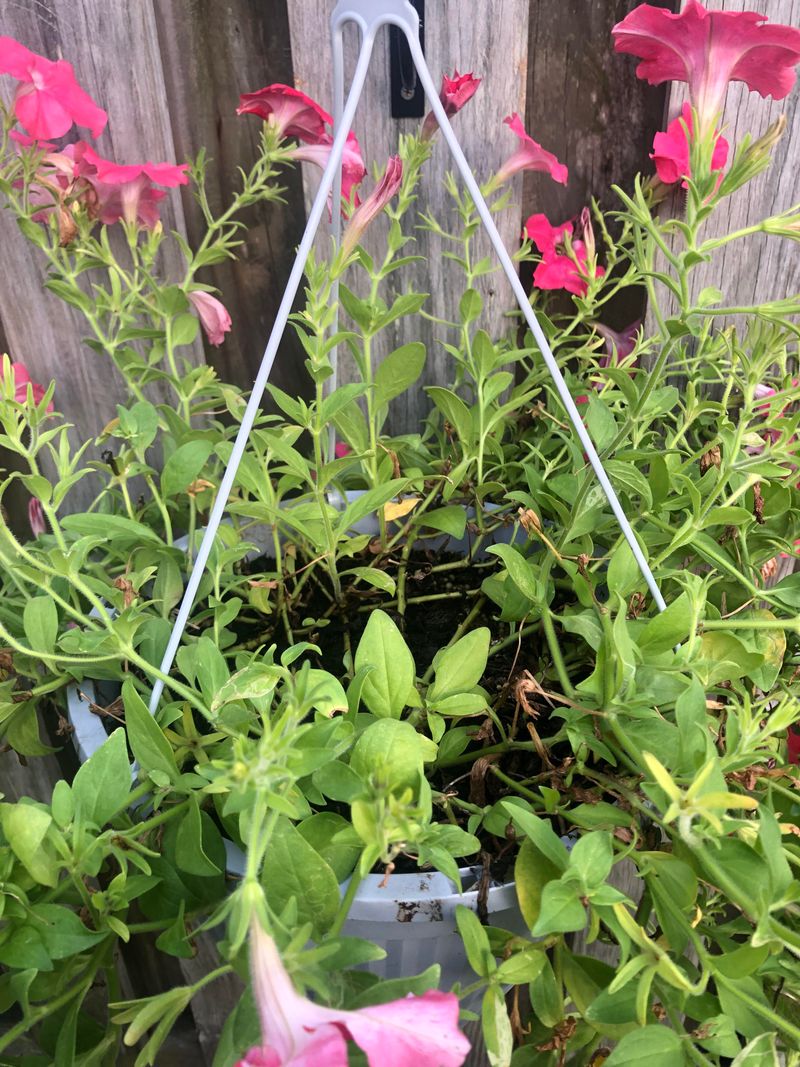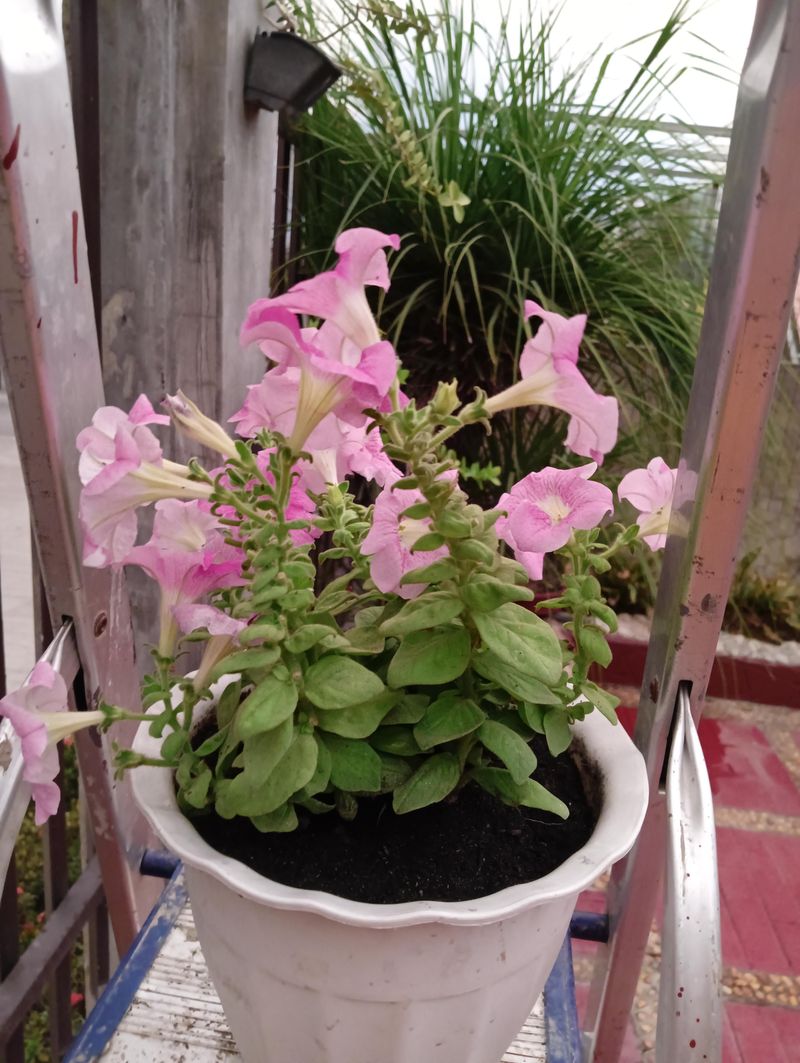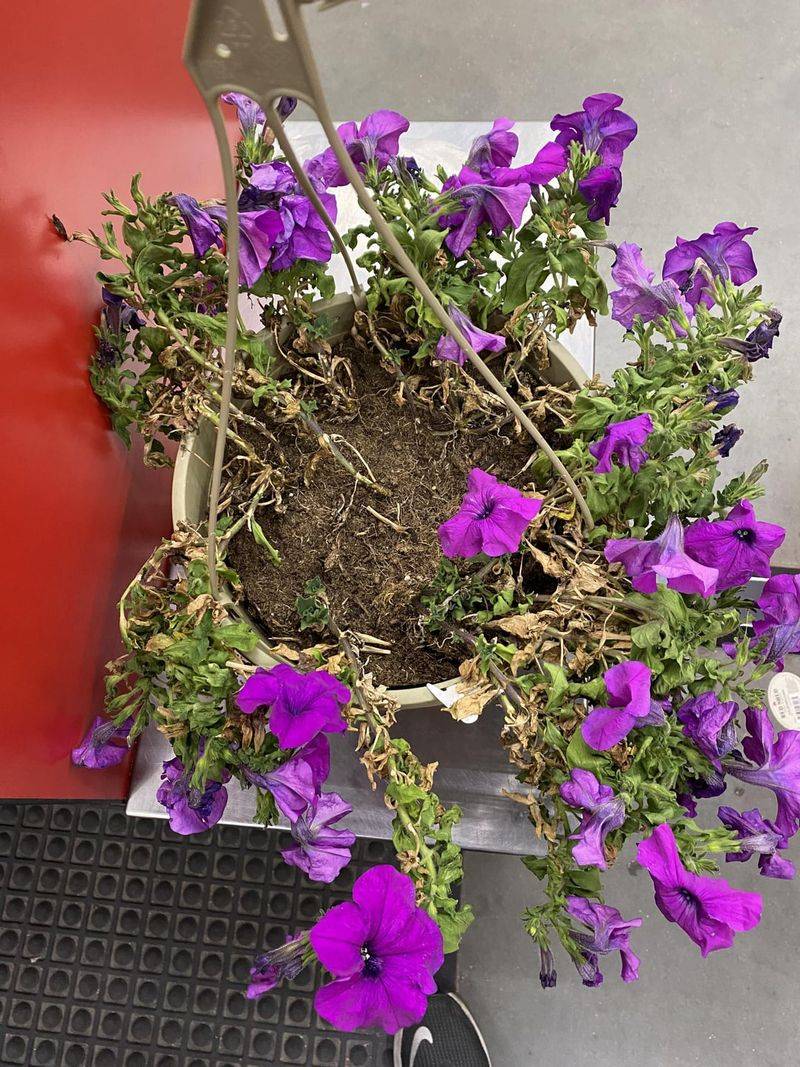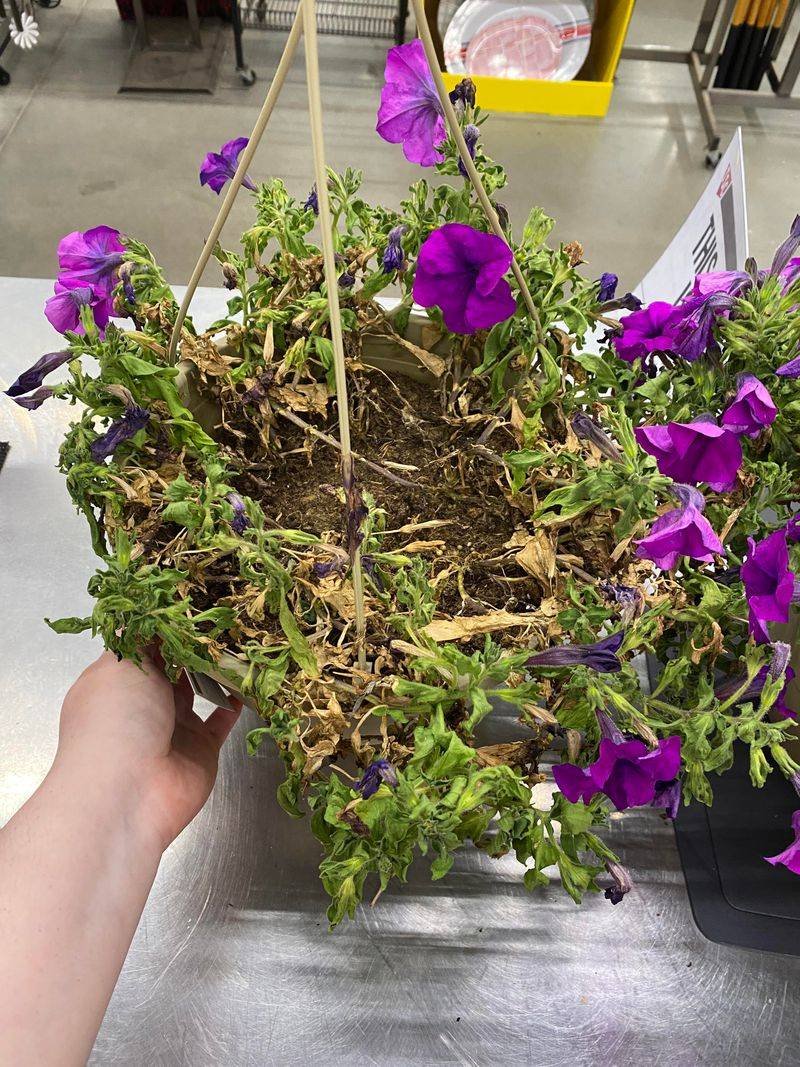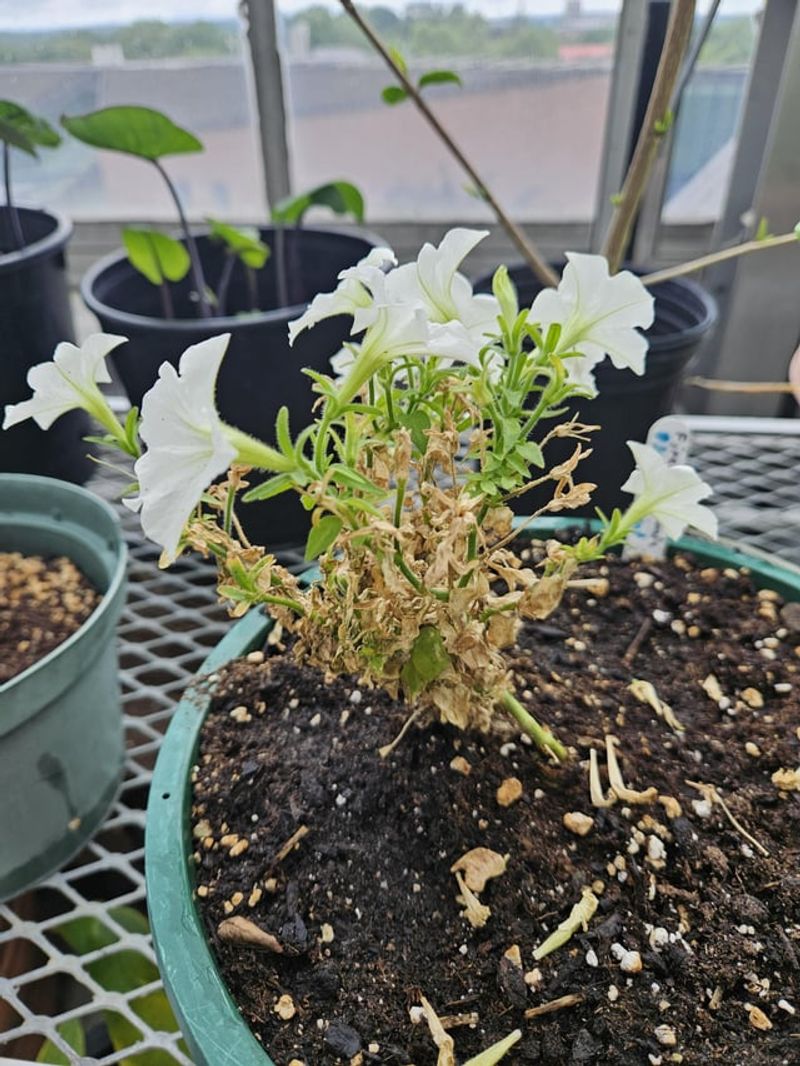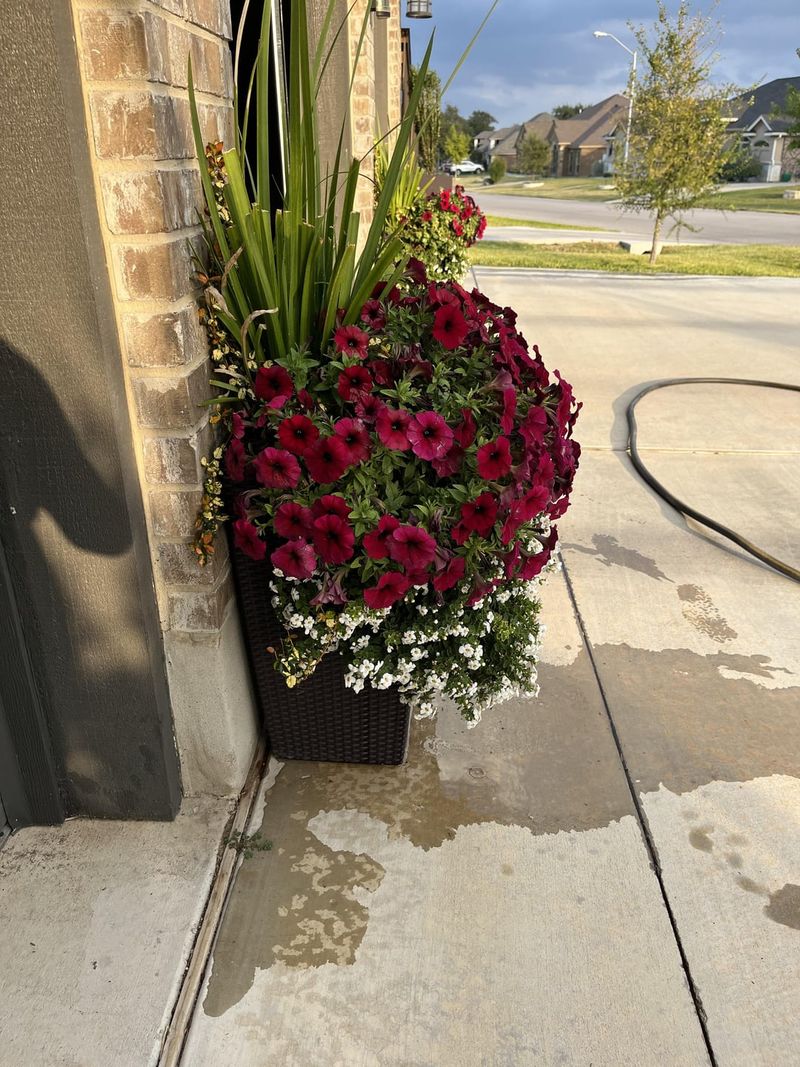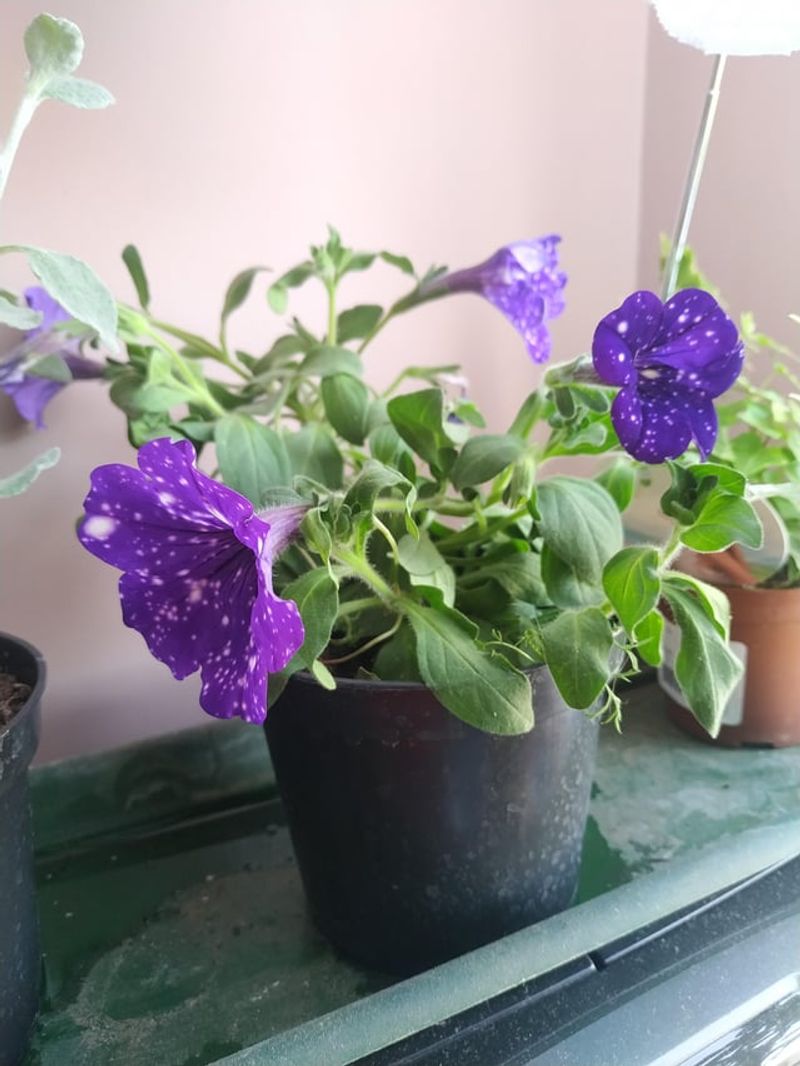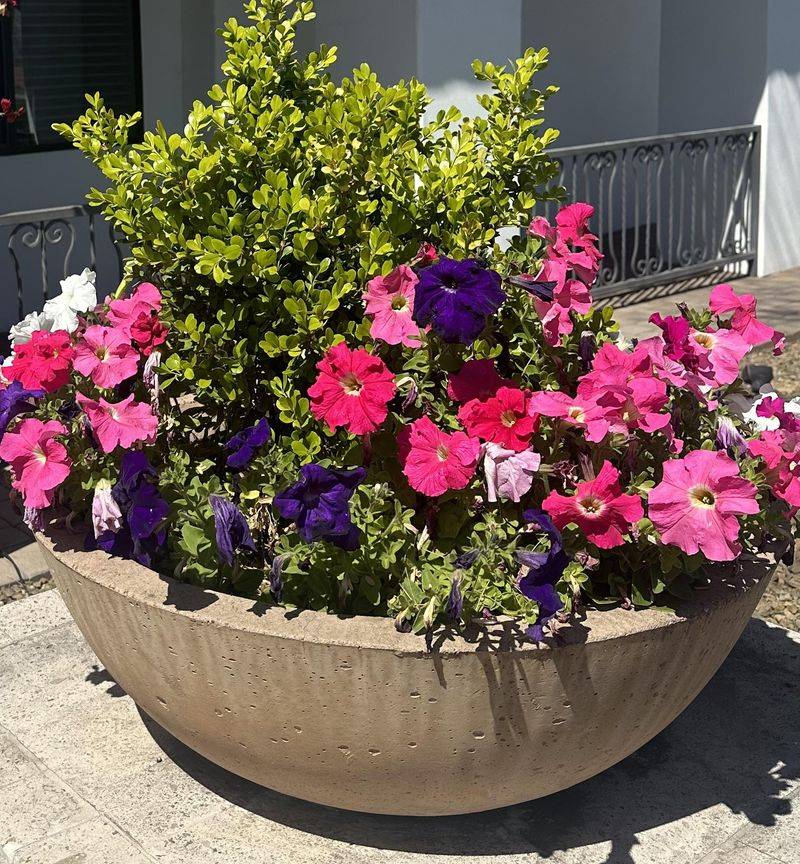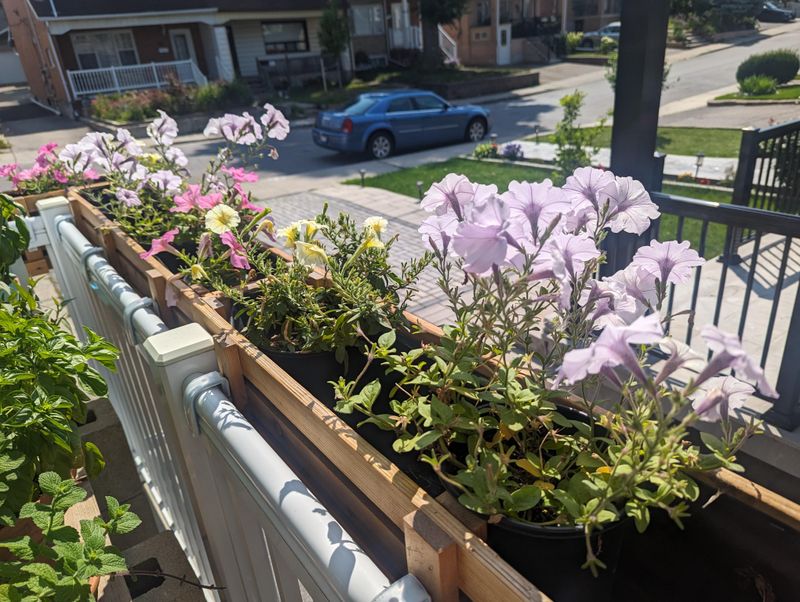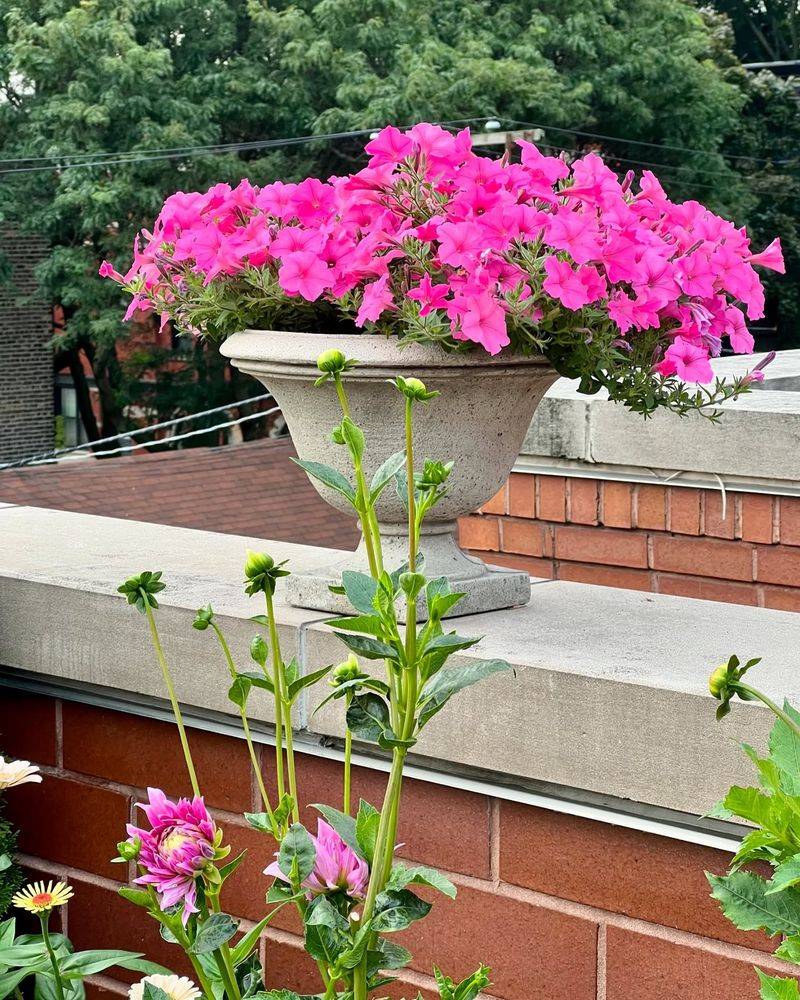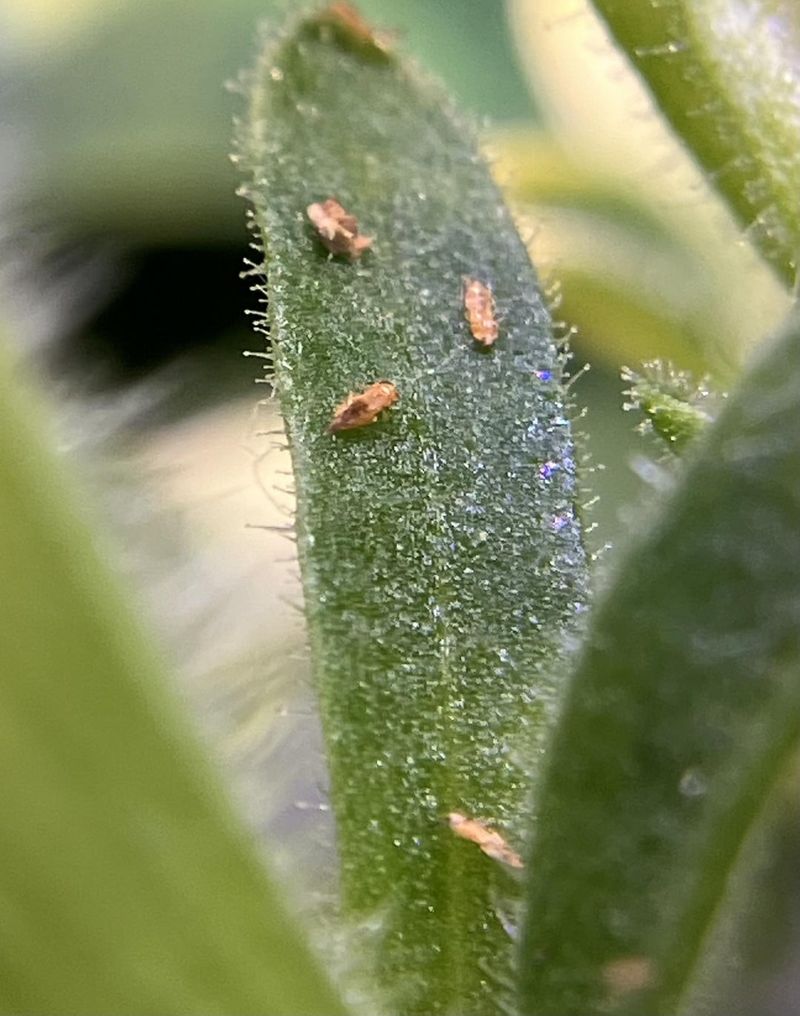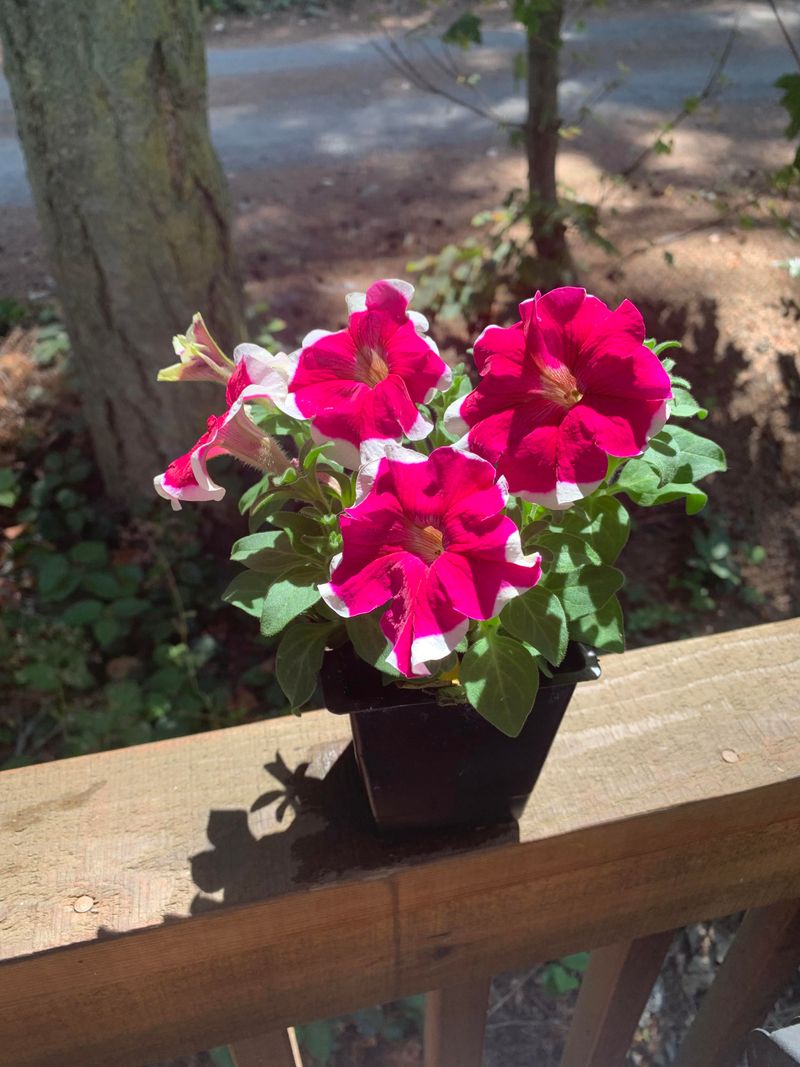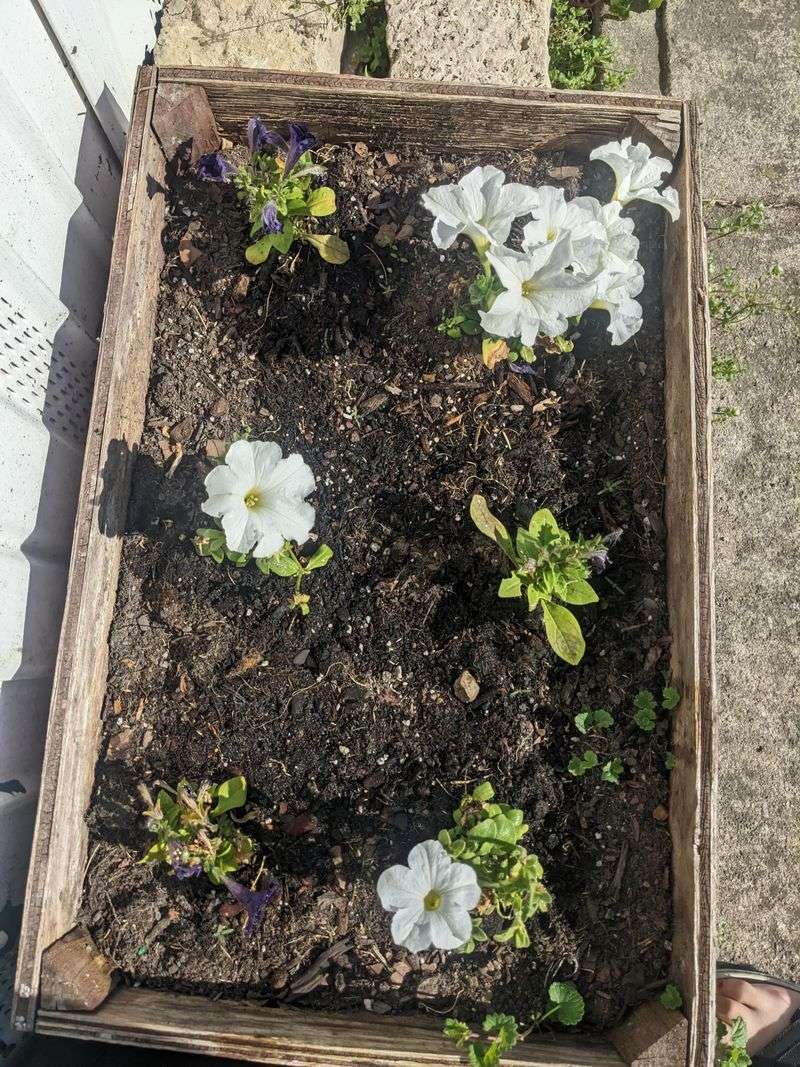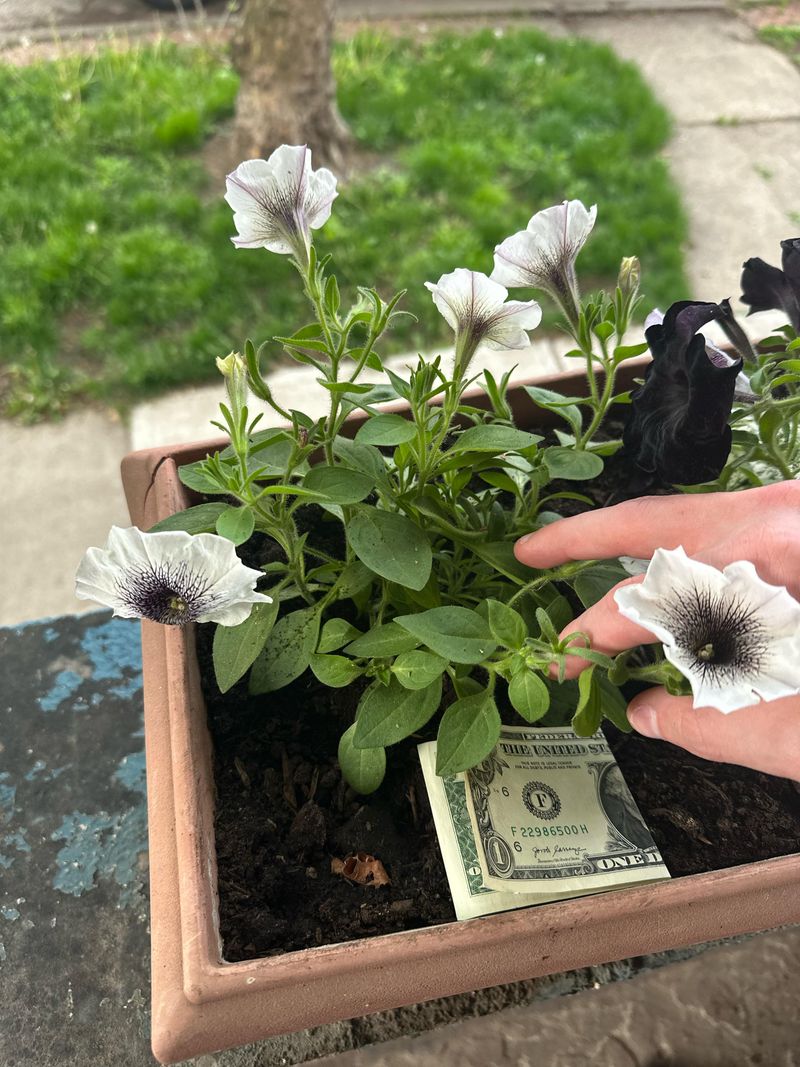Petunias can put on a nonstop flower show—if you know how to pinch them right. I used to let mine grow wild, then wondered why they looked leggy and tired halfway through summer.
Once I started pinching them regularly, everything changed. They grew fuller, bloomed like crazy, and looked so much better all season.
I’ll walk you through the simple tricks I use to keep mine thriving and blooming nonstop.
1. The Early Spring Pinch
Timing is everything when it comes to the first pinch. Wait until your young petunia plants have developed at least 3-4 sets of leaves, usually about 2-3 weeks after planting.
Gently pinch off the growing tip with your thumb and forefinger, removing about half an inch of the stem. This encourages the plant to branch out instead of growing tall and lanky, ultimately creating a fuller plant with more flowering sites.
2. The Mid-Season Refresh
By midsummer, petunias often become leggy and flower production slows down. Don’t panic! This is the perfect time for a mid-season refresh that will kickstart a whole new flush of blooms.
Cut back about one-third to one-half of the plant’s length, making cuts just above leaf nodes. Your plants might look a bit bare for a week or two, but they’ll quickly bounce back with renewed vigor and more flowers than before.
3. The Selective Stem Pinch
Not all petunia stems need the same treatment. Look for stems that are outgrowing others or heading in unwanted directions. These rogue stems can make your container look unbalanced.
Pinch just these selected stems back to maintain the plant’s overall shape while encouraging bushier growth where needed. This targeted approach helps maintain the plant’s aesthetic appeal while still promoting more blooming sites exactly where you want them.
4. The Deadhead Pinch
Spent flowers aren’t just unsightly—they’re stealing energy from potential new blooms! Make a habit of examining your petunias every few days for faded flowers.
Pinch off not just the flower itself, but the entire stem down to the first set of leaves. Many petunia varieties, especially newer ones, are self-cleaning, but even these benefit from occasional deadheading to redirect energy to new growth and flowers.
5. The Emergency Rescue Pinch
Sometimes petunias get severely leggy, with long stems bearing flowers only at the tips. When this happens, it’s time for drastic action that will save your summer display.
Cut all stems back by two-thirds their length, which seems brutal but works wonders. Water thoroughly after this severe pruning and apply a balanced liquid fertilizer. Within two weeks, your petunias will explode with new growth and flowers.
6. Right Watering Technique
Watering petunias correctly makes all the difference between mediocre and magnificent blooms. Always water at the base of the plant rather than overhead to prevent fungal diseases that love wet foliage.
Allow soil to dry slightly between waterings, then water deeply until it runs from drainage holes. Container petunias may need daily watering during hot summer days, while garden-planted ones might need just twice weekly soakings.
7. Feeding Schedule
Petunias are heavy feeders that deplete soil nutrients quickly as they produce their abundant blooms. Start with a slow-release fertilizer mixed into your potting soil at planting time.
Supplement with weekly applications of water-soluble fertilizer at half the recommended strength. If your petunias’ leaves start yellowing between the veins, they’re likely hungry for iron—a common issue in alkaline soils that can be remedied with iron supplements.
8. Sun Exposure Management
Petunias crave sunshine—at least 6 hours daily for best flowering. Morning sun with afternoon shade offers the perfect balance in hot climates, preventing stress while providing enough light for blooms.
In northern regions, full sun all day works beautifully. Watch for signs of inadequate light: stretched stems, sparse flowers, and pale leaves. Conversely, crispy brown edges on leaves signal too much harsh afternoon sun in southern gardens.
9. Container Selection
The right container can make or break your petunia display. Choose pots at least 10-12 inches in diameter with multiple drainage holes—petunias hate wet feet but need room to spread their roots.
Dark-colored containers absorb heat and may require more frequent watering. For stunning cascades, hanging baskets and window boxes allow trailing varieties to showcase their natural growth habit. Self-watering containers work wonders for busy gardeners during hot summer months.
10. Soil Composition
Petunias aren’t picky about soil, but they do have preferences that’ll boost their performance. Start with high-quality potting mix for containers, never garden soil which compacts too easily.
Add perlite or vermiculite to improve drainage while retaining moisture. The ideal pH range is slightly acidic to neutral (6.0-7.0). Adding compost or well-rotted manure at planting time provides slow-release nutrients that fuel continuous blooming throughout the season.
11. Spacing Requirements
Proper spacing prevents disease problems while allowing each plant to reach its full potential. Standard petunias need about 12 inches between plants, while spreading varieties require 18-24 inches.
Container plantings can be more densely packed for immediate impact, using the gardener’s rule of thumb: one plant per inch of container diameter. Remember that properly pinched petunias will fill in quickly, so resist the temptation to overcrowd initially.
12. Pest Prevention
Aphids and budworms are the main culprits that can turn beautiful petunias into tattered messes overnight. Inspect the undersides of leaves weekly for tiny green aphids, which can be blasted off with a sharp stream of water.
For budworms—those sneaky caterpillars that bore into flower buds—apply Bacillus thuringiensis (Bt), an organic control that won’t harm beneficial insects. Yellow sticky traps help monitor for adult moths and other insect pests before they become problems.
13. Weather Protection
Petunias are surprisingly resilient, but extreme weather can challenge even the hardiest varieties. During heatwaves, water deeply in the early morning and consider providing afternoon shade with umbrellas or shade cloth.
Heavy rain can shatter delicate blooms and compact soil. Moving containers under eaves or porches during downpours preserves the display. For unexpected late spring frosts, cover plants with lightweight fabric overnight to prevent damage to tender new growth.
14. Variety Selection
Not all petunias are created equal when it comes to summer performance. Look for heat-tolerant varieties like ‘Wave’ series, ‘Supertunia’, and ‘Tidal Wave’ that keep blooming through summer’s worst heat.
Some varieties are self-cleaning, reducing deadheading chores. Others offer weather resistance that keeps them looking fresh after rain. For containers, choose trailing types; for borders, more compact varieties maintain their shape better without constant pruning.
15. Overwintering Techniques
Though typically grown as annuals, petunias can be overwintered with a bit of effort. Before first frost, take 4-6 inch cuttings from healthy stems, remove lower leaves, and root them in moist potting mix.
Place in bright, indirect light indoors at 65-70°F. Alternatively, bring entire containers inside to a cool, bright location and reduce watering. Come spring, these overwintered plants will give you a head start on the season with earlier, more abundant blooms.

